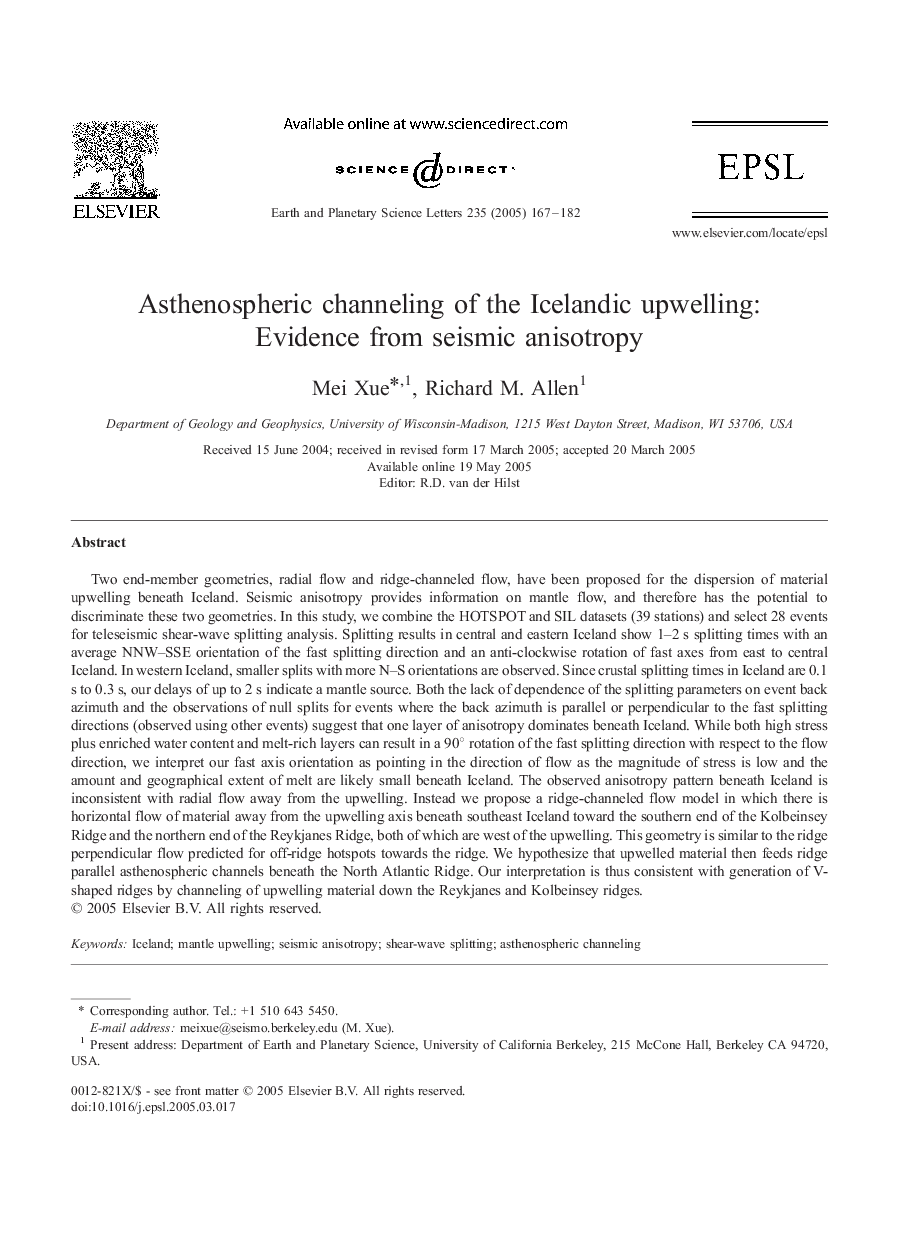| کد مقاله | کد نشریه | سال انتشار | مقاله انگلیسی | نسخه تمام متن |
|---|---|---|---|---|
| 9522320 | 1634964 | 2005 | 16 صفحه PDF | دانلود رایگان |
عنوان انگلیسی مقاله ISI
Asthenospheric channeling of the Icelandic upwelling: Evidence from seismic anisotropy
دانلود مقاله + سفارش ترجمه
دانلود مقاله ISI انگلیسی
رایگان برای ایرانیان
کلمات کلیدی
موضوعات مرتبط
مهندسی و علوم پایه
علوم زمین و سیارات
علوم زمین و سیاره ای (عمومی)
پیش نمایش صفحه اول مقاله

چکیده انگلیسی
Two end-member geometries, radial flow and ridge-channeled flow, have been proposed for the dispersion of material upwelling beneath Iceland. Seismic anisotropy provides information on mantle flow, and therefore has the potential to discriminate these two geometries. In this study, we combine the HOTSPOT and SIL datasets (39 stations) and select 28 events for teleseismic shear-wave splitting analysis. Splitting results in central and eastern Iceland show 1-2 s splitting times with an average NNW-SSE orientation of the fast splitting direction and an anti-clockwise rotation of fast axes from east to central Iceland. In western Iceland, smaller splits with more N-S orientations are observed. Since crustal splitting times in Iceland are 0.1 s to 0.3 s, our delays of up to 2 s indicate a mantle source. Both the lack of dependence of the splitting parameters on event back azimuth and the observations of null splits for events where the back azimuth is parallel or perpendicular to the fast splitting directions (observed using other events) suggest that one layer of anisotropy dominates beneath Iceland. While both high stress plus enriched water content and melt-rich layers can result in a 90° rotation of the fast splitting direction with respect to the flow direction, we interpret our fast axis orientation as pointing in the direction of flow as the magnitude of stress is low and the amount and geographical extent of melt are likely small beneath Iceland. The observed anisotropy pattern beneath Iceland is inconsistent with radial flow away from the upwelling. Instead we propose a ridge-channeled flow model in which there is horizontal flow of material away from the upwelling axis beneath southeast Iceland toward the southern end of the Kolbeinsey Ridge and the northern end of the Reykjanes Ridge, both of which are west of the upwelling. This geometry is similar to the ridge perpendicular flow predicted for off-ridge hotspots towards the ridge. We hypothesize that upwelled material then feeds ridge parallel asthenospheric channels beneath the North Atlantic Ridge. Our interpretation is thus consistent with generation of V-shaped ridges by channeling of upwelling material down the Reykjanes and Kolbeinsey ridges.
ناشر
Database: Elsevier - ScienceDirect (ساینس دایرکت)
Journal: Earth and Planetary Science Letters - Volume 235, Issues 1â2, 30 June 2005, Pages 167-182
Journal: Earth and Planetary Science Letters - Volume 235, Issues 1â2, 30 June 2005, Pages 167-182
نویسندگان
Mei Xue, Richard M. Allen,